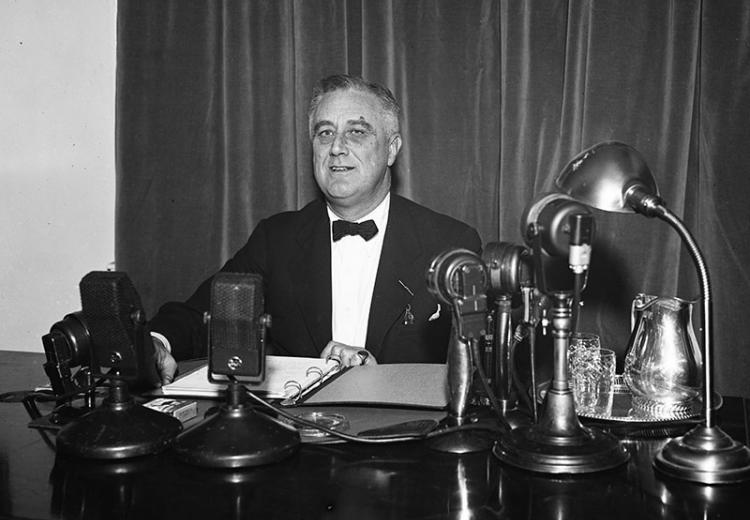Lesson 1: FDR's Fireside Chats: The Power of Words

Franklin D. Roosevelt having a fireside chat in Washington, D.C, 1937.
"I never saw him—but I knew him. Can you have forgotten how, with his voice, he came into our house, the President of these United States, calling us friends..."
—Carl Carmer, April 14, 1945
We live in an era of instantaneous and constant communications, yet many of our political leaders seem to have lost the ability to express their ideas to the people they govern. Franklin Roosevelt not only knew how to do that, he elevated the task to that of an art. Many historians, critics as well as supporters, credit the success of much of the early New Deal as much to the delivery of the messages as to their content.
What was it about FDR's voice, the structure of his Fireside Chats, and the relative novelty of radio in 1933 that made his use of this medium so effective and important historically? Why were Americans willing to engage with this unseen but clearly heard man? What can we learn from this example of presidential leadership?
This lesson will focus on two of FDR's Fireside Chats. The first, "The Bank Crisis," was given on March 12, 1933, and the second, "On the New Deal," was given on May 7, 1933.
In this lesson, students will gain a sense of the dramatic effect of FDR's voice on his audience, see the scope of what he was proposing in these initial speeches, and make an overall analysis of why the Fireside Chats were so successful.
Guiding Questions
How did FDR's use of the Fireside Chats enable him to communicate his message in a way that was new and unique at that point in history?
How did FDR's Fireside Chats demonstrate his leadership?
What did the Fireside Chats change about the office of the President?
Learning Objectives
Analyze how FDR used mass communication to govern and enact public policy.
Evaluate the sort and long-term significance of the first two of Fire Side chats.
Evaluate the role played by communication technology in comparison to the evolvement of the office of the President.
